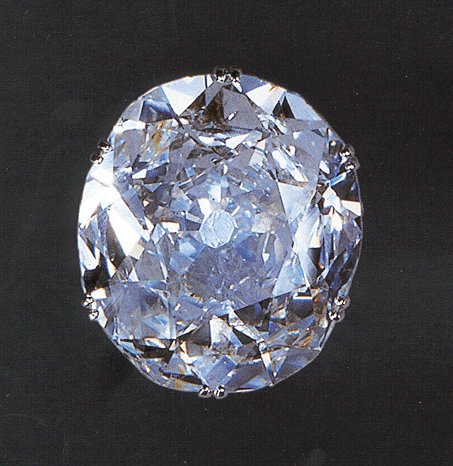
The Kohinoor originated at Kollur, Guntur district in the state of Andhra Pradesh in India. It has belonged to various Hindu, Mughal, Persian, Afghan, Sikh and British rulers who fought bitterly over it at various points in history and seized it as a spoil of war time and again. It was finally seized by the East India Company and became part of the British Crown Jewels when Queen Victoria was proclaimed Empress of India in 1877.
It has been said that whoever owned the Koh-I-Noor ruled the world, a suitable statement for this, the most famous of all diamonds and a veritable household name in many parts of the world. Legend has suggested that the stone may date from before the time of Christ; theory indicates the possibility of its appearance in the early years of the 1300s; history proves its existence for the past two and a half centuries. The first writer has stated:
“Reguarding its traditional history, which extends 5000 years further back, nothing need be said here; though it has afforded sundry imaginative writers with a subject for highly characteristic paragraphs we have no record of its having been at any time a cut stone.”
The earliest authentic reference to a diamond which may have been the Koh-I-Noor is found in the Baburnama, the memoirs of Babur, the first Mogul ruler of India. Born in 1483, Babur (meaning ‘lion’ — the name was not given to him at birth but appears to be a nickname, deriving from an Arabic or Persian word meaning ‘lion’ or ‘tiger’) was descended in the fifth generation from Tamerlane on the male side and in th fifteenth degree from Genghis Khan on the female side. With the blood in his veins of two of the greatest conquerors Asia has ever seen, it is not all that surprising that Babur himself should have become a great conqueror in his own right.
As a young man Babur owed his survival and success on the political and military battlefields to a combination of winning personal qualities and swift opportunism; these were to insure his conquest of the plains of northern India. But in addition to being a warrior, Babur was a cultured and civilized man – a writer and poet. Kohinoor Diamon
Kohinoor Diamon Kohinoor Diamon
Kohinoor Diamon
 Kohinoor Diamon
Kohinoor Diamon
No comments:
Post a Comment